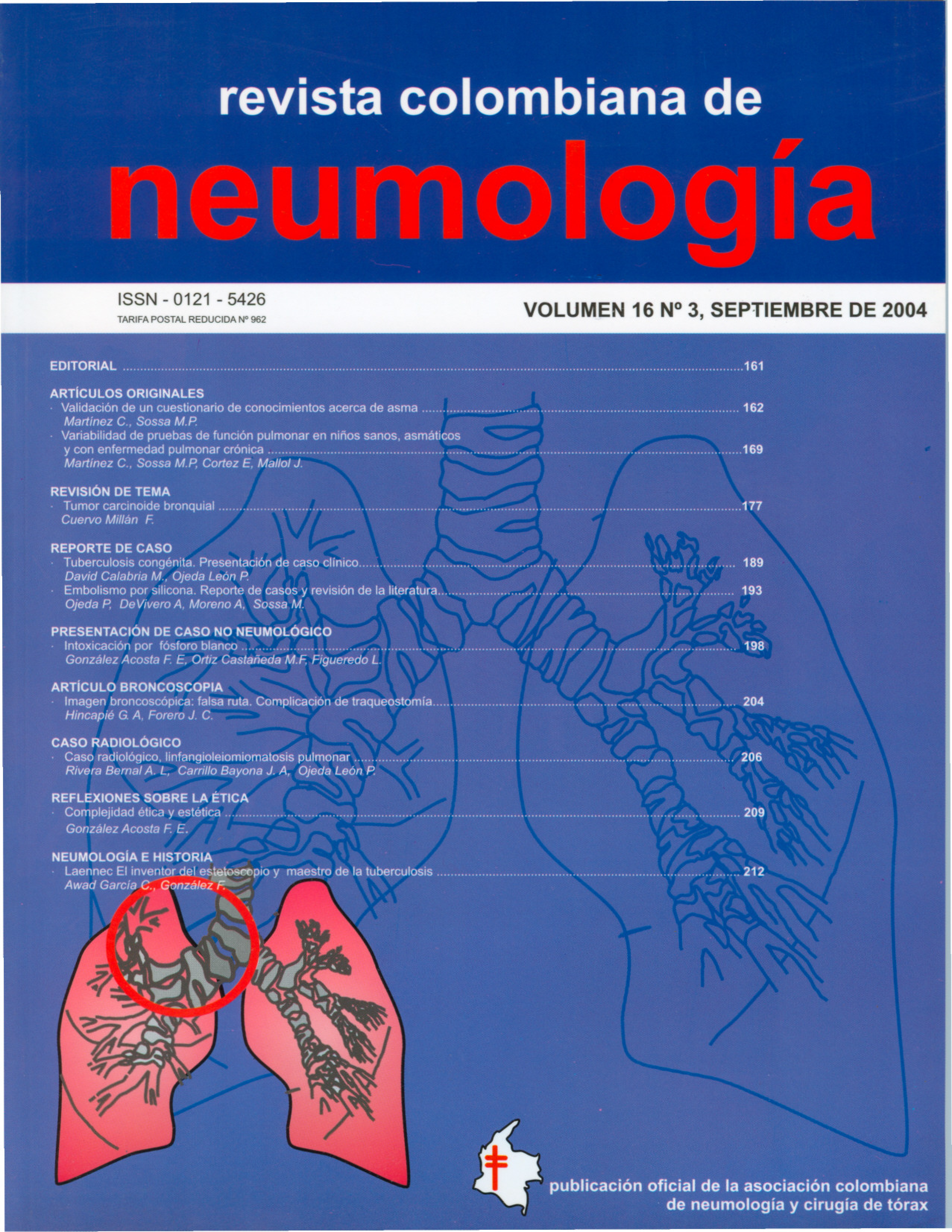Embolismo por silicona. Reporte de casos y revisión de la literatura
Embolismo por silicona. Reporte de casos y revisión de la literatura

This work is licensed under a Creative Commons Attribution-NonCommercial-ShareAlike 4.0 International License.
Ninguna publicación, nacional o extranjera, podrá reproducir ni traducir sus artículos ni sus resúmenes sin previa autorización escrita del editor; sin embargo los usuarios pueden descargar la información contenida en ella, pero deben darle atribución o reconocimiento de propiedad intelectual, deben usarlo tal como está, sin derivación alguna.
Show authors biography
Introduction: In Colombia, as in other countries around the world, the current physical beauty concept has increased the number of plastic surgeries. However, not everyone has access to these procedures. For those who are less favored culturally and economically, the increasing altemative of an illegal subcutaneous silicone injection, performed by untrained and unscrupulous personnel, with the purpose of changing physically, endangers the patients’ life. In this study, 2 cases of pulmonary embolism caused by silicone, which developed respiratory failure and received vital support in Santa Clara Hospital's ICU in Bogotá, are reviewed. They had a favorable evolution and adequate survival contrary to other reports found in the worldwide literature.
Objective: To describe the clinical characteristics and follow-up of the two patients with pulmonary embolism caused by silicone.
Design: Case report
Materials and methods: The clinical records of the two patients who were hospitalized in the ICU of Santa Clara Hospital in Bogota were reviewed and described. Afterwards, the existing literature on “Silicone and Respiratory failure” was reviewed in PubMed, OVID and HIGHWIRE databases.
Conclusions: The illegal application of silicone injections is related to embolism caused by this substance, pulmonary and extra-pulmonary vascular and immunological mechanics impairment and high risk of death.
Article visits 33 | PDF visits 17
Downloads
- Kyung Ch, et al. Clinicopathologic Review of Pulmonary Silicone Embolism with Special Emphasis on the Resultant Histologic Diversity in the lung — A review of Five Cases - . Yonsei Med J.2002; 43: 152-159.
- Vilde F, et al. (Fatal neumopathy linked to subcutaneous injection of liquid silicone into soft tissue). Ann Pathol 1983:4:307-12. Abstract.
- LaiYF, etal. Acute pneumonitis after subcutaneous injections of silicone for augmentation mammaplasty. Chest. 1994; 106 (4):1152-5.
- Chastre J, et al. Acute and latent pneumonitis after subcutaneous injections of silicone in transsexual men. Am Rev Respir Dis. 1987; 135(1):236-40.
- Solomons ET, Jones JK. The determination of polydimethylsiloxane (silicone oil) in biological materials: a case report. J Forensic Sci. 1975; 20(1):191-9 (Abstract).
- Goldblum RM, et al. Antibodies to silicone elastomers and reactions to ventriculo-peritoneal shunts. Lancet 1992; 340:510.







